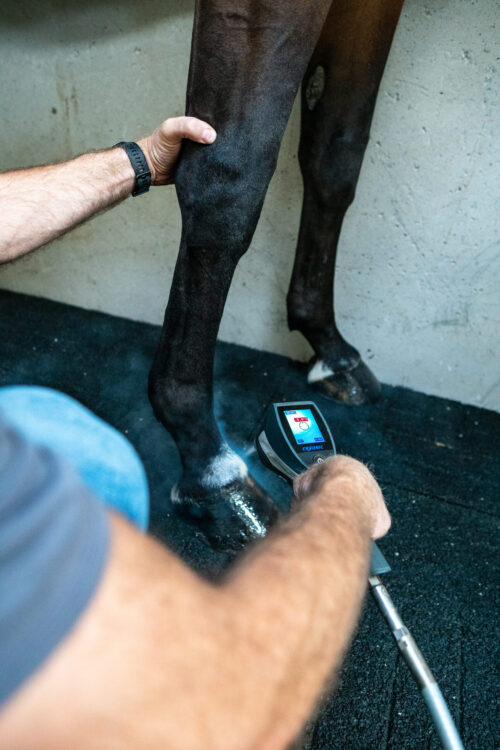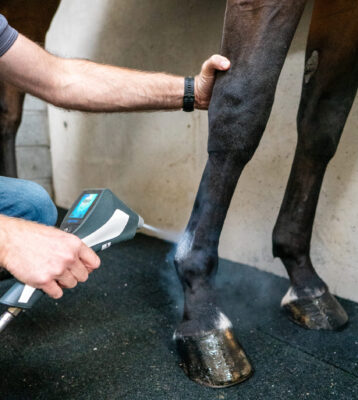Cryotherapy

The uses and benefits of Cryotherapy:
Reduction of inflammation
Decreased swellings
Increased circulation of fresh oxygenated blood to the site
Speeds up recovery of tendon injuries
Reduction of spasm
Reduced recovery time for injuries
Enhances healing post-surgery
Enhances recovery of muscle and ligament strains
- Revitalises tired and hot legs after competition
- Tendon and Ligament Injuries
- Sore shins, bruising, splints and ringbone
- Bursitis and synovitis
- Inflammation of Joints
- Abscesses, bruising and hoof related problems
- Mud fever and skin conditions
- Injury Prevention and increased mobility
- Preventative measure – pre and post competitions
- Soft-tissue damage
- Fractures
- Laminitis
- Flesh wounds
- Concussion
- Arthritis
- Navicular syndrome
- Sesamoiditis
The local treatment provides a rush of oxygenated blood, a natural analgesic effect, and a reduction in muscle tension to the targeted area (Bleakley et al., 2004). Post-treatment, this circulation of blood in the treatment area increases the rates of healing and recovery in the injured tissues (Swenson et al., 1996).
Additionally, the natural analgesic effect provided from the treatment and the relaxation of muscles allows the individual to gradually increase their exercise tolerance, strengthen the muscles and joints reducing the risk of injury in the future (Bleakley et al., 2004).

